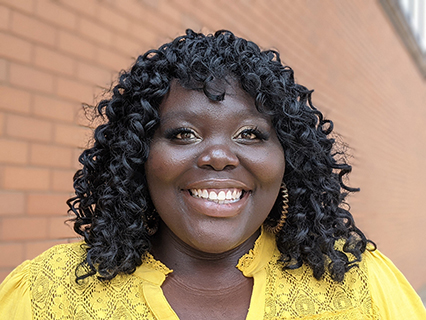Page Content

The world of education is wonderful: the ability to shape minds, inspire students, hone your craft and, occasionally, be the learner. Presently, that’s where I am at in my journey as a teacher.
I began the 2021/2022 school year as the educator in residence at the Canadian Museum for Human Rights (CMHR) in Winnipeg.
Seeing as the place I work for centres its education practices around global human rights, I’m going to tell you about three things I’ve learned so far.
Anti-racism education isn’t hard, even for the youngest of learners.
I’m sure we’ve all heard countless stories of racialized students being bullied, having racial slurs hurled at them and stereotypes being their norm. For this reason, I believe that it’s easy for students to learn about racism and how to be better.
Growing up, I was a very privileged girl — rarely was I bullied or made fun of. My closest friends are Filipino, Vietnamese, Italian, Jamaican and Polish. This has allowed me to grow and learn about other people, where they come from and their traditions. I suggest that the conversation on race and how to be anti-racist should start in kindergarten, beginning with teachers using books as a vehicle to talk about the differences in a classroom and how these differences make the class a better place to be.
Reconciliation is not only important; it is vital.
Did you know that, of the 94 calls to action of the Truth and Reconciliation Commission, only 14 have been fulfilled (as of June 2021)? There is a long way to go in righting the wrongs of the past. The residential school system is a sad legacy that this nation holds.
The Witness Blanket, created by Carey Newman, is a grave, yet beautiful, art installation at the CMHR that has an artifact from each residential school in the country. When I first walked through the gallery and saw the different items within the blanket — a doll, a baby blanket, a very small moccasin, a locket — it became clear just how young some of the taken students were, a reminder that children were the true victims of residential schools.
There is healing to be done. A lot of that healing can be done through education, which leads to action. Students are keen to learn about this legacy and their natural curiosity will lead them to ask, “why?” It is important to be honest with students and acknowledge the severity of what happened and what they can do as students. Acknowledgement may or may not lead to forgiveness of these broken promises. In fact, forgiveness isn’t owed to the settlers of this nation, but acknowledgement will begin the healing.
We can all be upstanders.
An upstander is a person who recognizes injustice, knows their personal strengths and uses those strengths to create change. As a division two teacher in a Catholic elementary school, I found it both easy and necessary to show students the many upstanders that we see on television, in the media and around the world. What was even more important was engaging students in conversations that allowed them to see themselves as upstanders. How can we take a stand against injustice? In what ways can we be more inclusive to marginalized populations? What can we do to be better allies to people who need one?
Students will often say things like, “I’m just a kid. I don’t have money. What can I do?” After joking with them that I am an adult who doesn’t have money, my response is often, “you don’t need money to be a good person.” Teaching students how to stand up for what is right, how to host fundraisers or awareness campaigns about global injustices, and allowing them to be brave and ask tough questions all help shape them into the upstanders we need in our world.
“All human beings are born free and equal in dignity and rights.” That is the first line in article one of the Universal Declaration of Human Rights. This seems like a no-brainer, doesn’t it?
My challenge to you is to make sure that all students feel this to their core — that their dignity is protected, they feel free and equal and their rights are of utmost importance, always.
It is quite simple. ❚
Sarah Adomako-Ansah teaches for Edmonton Catholic Schools. She’s currently on secondment as the educator in residence at the Canadian Museum for Human Rights in Winnipeg.
